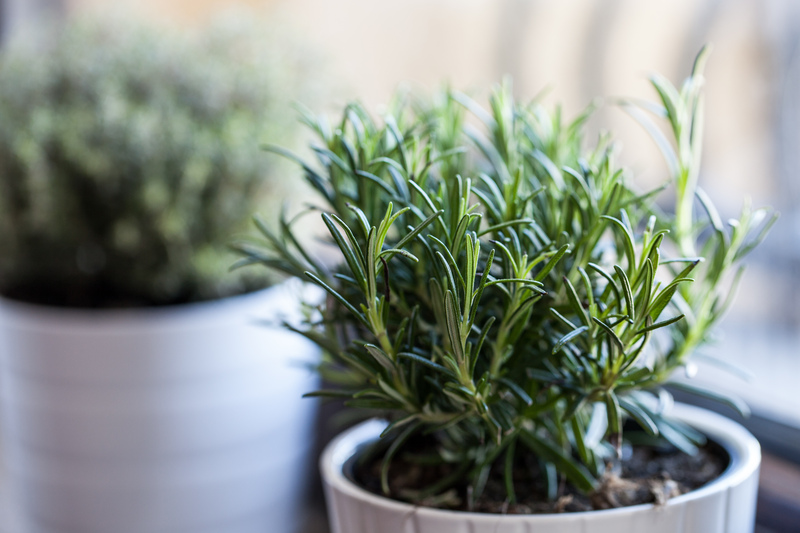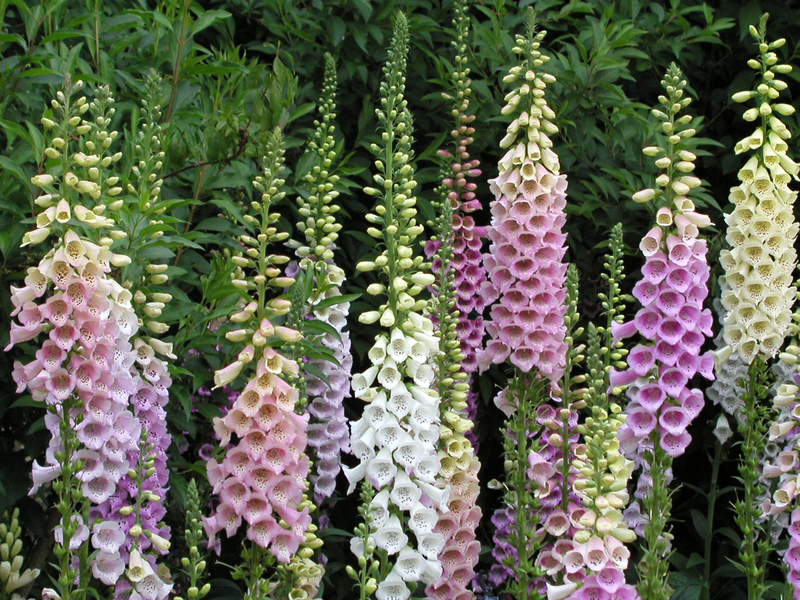A Guide to Choosing the Best Flowers and Foliage for Window Boxes
Window boxes are a charming way to add color, fragrance, and curb appeal to your home. Whether placed along a sunny kitchen window, shading a cozy bedroom, or brightening your balcony, window boxes can transform an ordinary facade into a beautiful display. But selecting the best flowers and foliage for window boxes requires more than just picking what catches your eye at the nursery; it involves careful consideration of sun exposure, box size, maintenance needs, and design. In this comprehensive guide, we'll explore how to create stunning window box plantings that thrive throughout the seasons.
Why Window Boxes Deserve Special Attention
Before diving into plant choices, it's important to understand why window box gardening is distinct from in-ground beds or container planters on the ground. Window boxes often face unique challenges (like limited root space and exposure to wind, sun, and rain), so picking the right flower and foliage varieties is crucial for ongoing success.
- Visual Impact: Window boxes are seen at eye-level, so every planting will be scrutinized closely.
- Microclimates: The position of each box impacts which plants can thrive--south-facing windows may get hours of sun, while north-facing could be mostly shade.
- Water Retention: Window boxes dry out faster than ground beds, demanding drought-tolerant or moisture-loving species, depending on your watering habits.
- Root Space: The narrow and shallow dimensions of most window boxes require plants with compact root systems.

Factors to Consider When Choosing Plants for Window Boxes
1. Sun Exposure
Sunlight is the most significant factor in selecting the ideal window box flowers. Identify whether your window receives:
- Full Sun: More than 6 hours of direct sunlight per day
- Partial Sun/Shade: 3-6 hours of sunlight (usually morning or late afternoon)
- Full Shade: Less than 3 hours of direct sunlight daily
Knowing this will significantly narrow your plant options, since using shade-loving flowers in full sun--or vice versa--leads to disappointment.
2. Climate and Weather
Consider your USDA Hardiness Zone and local weather nuances. Some annual flowers may thrive in cool coastal climates, while others wilt in summer heat. Wind can also batter tall or fragile blooms--so choose robust plants in exposed locations.
3. Window Box Size and Material
The size of your window box is vital. Shallow boxes (under 6" deep) can't support deep-rooted plants and require more watering. Opt for a minimum depth of 8-10 inches for versatility. The box material (wood, metal, plastic, or terracotta) will impact insulation and root temperature--metal heats up quickly in sun, while wood is more insulating.
4. Maintenance Level
If you travel often or can't water daily, drought-tolerant window box plants such as succulents or geraniums may be best. For hands-on gardeners, high-maintenance beauties like fuchsias or impatiens could be rewarding.
5. Desired Aesthetic & Color Scheme
Do you envision a cascading cottage garden look, monochromatic modern box, or classic red-and-white scheme? Bold, bright flowers or lush green foliage? Take cues from your home's exterior palette and style.
Best Types of Flowers for Window Boxes
Sun-Loving Annual Flowers
- Geraniums (Pelargonium) - A window box classic, geraniums bloom in red, pink, white, and purple. Their drought tolerance and vibrant color make them a top choice for sunny locations.
- Petunias - These fast-growing flowers trail and fill out quickly. Wave petunias form lush mounds with minimal care.
- Calibrachoa (Million Bells) - Ideal for trailing over window box edges. Deep pinks, purples, and sunny yellows add drama and color.
- Marigolds - Hardy and pest-resistant, marigolds fill out boxes with golden, orange, or rust-red shades throughout the summer.
- Verbena - Great for a window planter box in the sun, verbena produces clusters of small, long-lasting flowers.
Shade-Tolerant Annual Flowers
- Impatiens - Bright and cheerful, impatiens will bloom in all but the darkest shade.
- Begonias - Wax or tuberous begonias thrive in shade and offer delicate flowers plus glossy leaves.
- Fuchsia - While a bit fussier about moisture, their pendulous blooms are showstoppers in north- or east-facing window boxes.
- Torrenia (Wishbone Flower) - An elegant, shade-loving annual that comes in purples, blues, and whites.
Perennials and Bulbs for Long-Lasting Impact
- Heuchera (Coral Bells) - Grown more for foliage, but bottlebrush flowers appear in spring.
- Hostas - Miniature hostas provide interesting variegated leaves and can handle shade.
- Narcissus, Crocus, and Tulips (Bulbs) - Plant in the fall for a *spring explosion* of cheerful blooms.
Fragrant and Pollinator-Friendly Flowers
- Alyssum - Cascading mounds of tiny white or purple flowers fill the air with fragrance.
- Sweet Peas (Dwarf) - Prefer cool climates, but add perfume and soft pastels to the window display.
- Lantana - Attracts bees and butterflies and loves heat and sun.
The Role of Foliage: Texture, Contrast, and Structure
While flowers may draw the eye, ornamental foliage gives depth, texture, and balance to window box arrangements. Consider these top choices:
Best Greenery for Window Boxes
- Sweet Potato Vine (Ipomoea batatas) - Bold, fast-growing trailing foliage, available in chartreuse or deep purple.
- English Ivy (Hedera helix) - Hardy, drought-tolerant, and perfect for tumbling down the sides of boxes.
- Lampine (Lamium) - Shade-loving with lovely silver-variegated leaves.
- Creeping Jenny (Lysimachia nummularia) - Lively, bright green trailing plant ideal for softening box edges.
- Dusty Miller - Soft, silvery foliage that contrasts beautifully with brighter blooms.
- Coleus - Offers endless leaf color and shape combinations from sunshine yellow to dark burgundy. Thrives in part-shade.
Grass and Vertical Accents
- Carex (Sedge) - A tufted grass in green, bronze, or variegated stripes for height.
- Festuca (Blue Fescue) - Fine, blue-tinged clumping grass for contemporary window boxes.
Classic Design Techniques for Window Boxes
Landscape designers often follow the "thriller, filler, spiller" approach for balanced window box arrangements:
- Thriller: The main focal point (e.g., tall geranium, a grassy thrill, or a striking euphorbia).
- Filler: Mounding plants to fill in the middle space (e.g., calibrachoa, coleus, or begonias).
- Spiller: Trailing plants that spill over the box edge for softness and movement (e.g., ivy, sweet potato vine, or lobelia).
When choosing window box plants, incorporate a mix of flower shapes, foliage textures, and bloom times for continuous beauty.
Best Plant Combinations for Sun and Shade
Full Sun Window Box Ideas
- Geraniums (thriller), Calibrachoa (filler), Sweet Potato Vine (spiller)
- Petunias (filler), Marigolds (filler), Verbena (spiller)
- Lantana (thriller), Alyssum (filler), Creeping Jenny (spiller)
Partial or Full Shade Window Box Combinations
- Impatiens (filler), Coleus (filler/thriller), Lampine (spiller)
- Fuchsia (thriller), Begonias (filler), Ivy (spiller)
- Hosta (Miniature) (thriller), Lobelia (spiller), Heuchera (filler)
Seasonal and Edible Plants
- Pansies and Violas - Ideal for spring and fall boxes, when other annuals aren't yet available.
- Dwarf Herbs - Mix basil, thyme, and chives for a practical and attractive window box garden.
Tips for Window Box Success
- Use high-quality potting mix for good drainage.
- Water frequently; boxes dry quickly, especially in wind or sun.
- Fertilize regularly, since nutrients wash out faster in window boxes.
- Deadhead spent blooms to encourage more flowers.
- Switch plants seasonally for continuous interest--bulbs and pansies in spring, heat-lovers in summer, hardy greens in fall.
Common Mistakes to Avoid
- Overcrowding: Small plants grow quickly; leave room for mature size. Crowded roots mean smaller, stressed flowers.
- Poor drainage: Soggy roots kill more window box plants than drought ever could. Ensure drainage holes are open and use a potting mix, not garden soil.
- Ignoring exposure: Placing shade plants in sun or vice versa will result in weak, straggly growth and poor blooms.

Sample Planting Plans for Stunning Window Boxes
Vibrant Summer Box for Sun
- Center: 1 upright geranium (red or pink)
- Sides: 2 calibrachoa (deep purple and yellow)
- Front: 2 sweet potato vines (chartreuse or purple)
- Edge Filler: Alyssum or lobelia for added texture
Elegant Shade-Loving Box
- Back: Mini hostas or coleus (for height)
- Middle: Wax begonias or impatiens (mixed colors)
- Front/Edge: English ivy or lamium (to spill)
Fragrant Cottage-Inspired Window Box
- Center: Dwarf sweet peas (for scent)
- Sides: Lavender (if box is deep and sunny)
- Front: Creeping thyme or alyssum
Conclusion: Make Your Window Boxes Bloom
Selecting the best flower and foliage combinations for window boxes means looking beyond looks. By considering sun exposure, box size, maintenance needs, and design principles, you can create gorgeous displays that change with each season. Mix thrillers, fillers, and spillers for professional results, and don't be afraid to experiment with color and texture.
With the right choices, your window boxes will overflow with beauty, fragrance, and a bit of personal flair--delighting all who pass by your window.